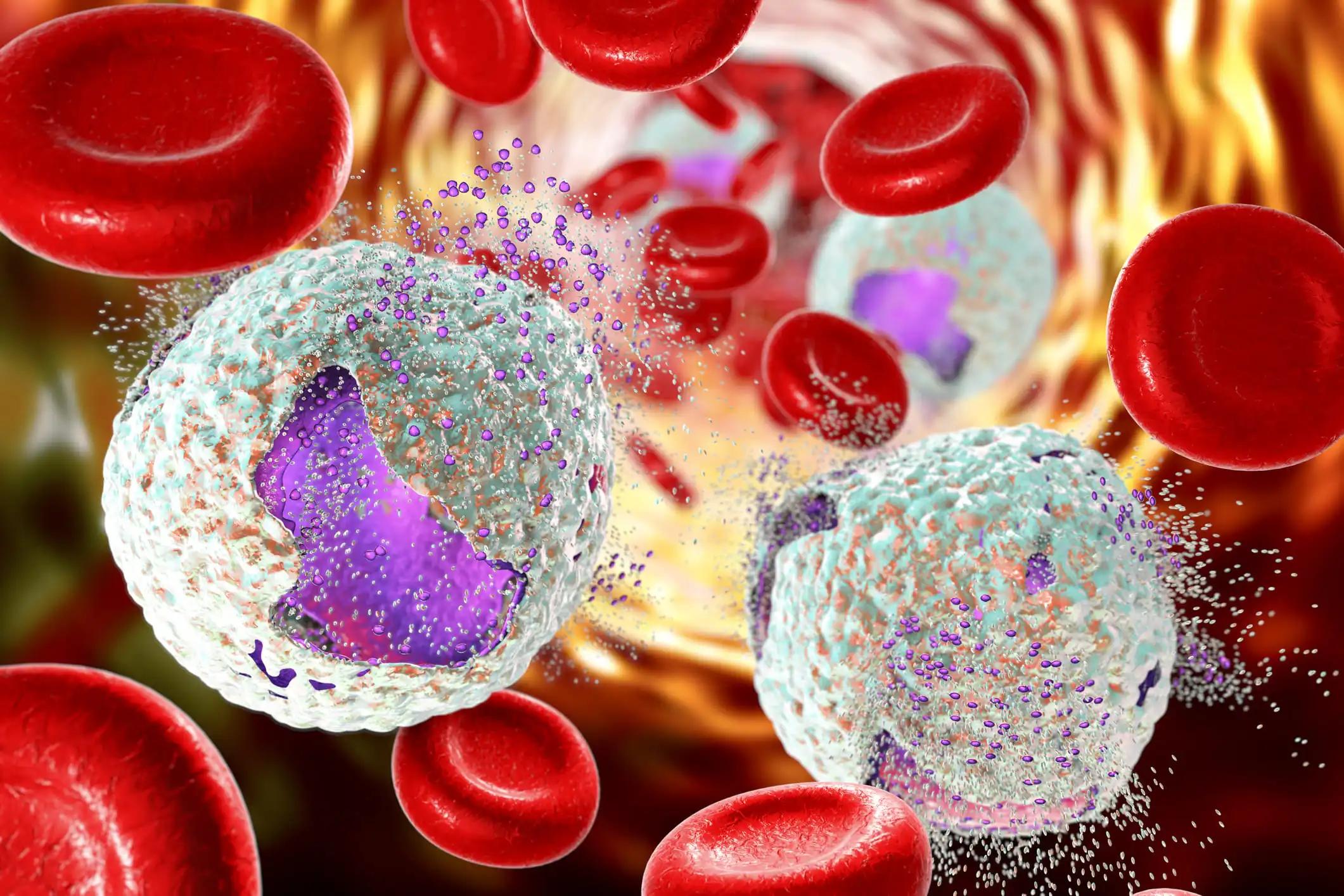KEY TAKEAWAYS
- The study aimed to determine the optimal post-remission treatment for patients with low to intermediate-risk AML.
- The results revealed that for patients with low/favorable-risk AML, auto-SCT is optimal; prioritize allo-SCT, especially for young intermediate-risk patients.
The acceptance of allogeneic stem cell transplantation (allo-SCT) for post-remission treatment in high-risk acute myeloid leukemia (AML) is well-established. However, determining the optimal treatment for patients in complete remission with low/favorable or intermediate-risk AML remains contentious.
Wu Ye and the team aimed to determine the best post-remission treatment in low to intermediate-risk patients with AML.
Researchers compared the impacts of treatment strategies, including allo-SCT, auto-SCT, and consolidation chemotherapy (CT), for individuals with low/favorable or intermediate-risk AML. They estimated pooled HRs and 95% CIs for overall survival and disease-free survival (DFS) using Stata12 and R software. The meta-analysis comprised thirty clinical studies involving 6682 patients.
The findings indicated that allo-SCT yielded the most favorable treatment outcome among all AML patients, with auto-SCT following closely behind and CT appearing to be the least effective. Among individuals with low/favorable-risk AML, auto-SCT showed the most promising treatment outcome, followed by allo-SCT, while CT performed the least favorably.
In patients with intermediate-risk AML, haploidentical stem cell transplantation (haplo-SCT) demonstrated the best treatment outcome, followed by allo-SCT (excluding haplo-SCT), with both auto-SCT and CT showing the least favorable outcomes.
However, it’s worth noting that the median age of the haplo-SCT group was considerably younger than that of the control group, which may have contributed to the better prognosis of the haplo-SCT group.
Patients with low/favorable-risk AML and those with intermediate-risk AML [excluding high-risk] should consider prioritizing allo-SCT if eligible for transplantation, with auto-SCT being an alternative option. However, subgroup analysis suggests that auto-SCT may be the preferred treatment for patients with low/favorable-risk AML, while allo-SCT is likely the preferred choice for those with intermediate-risk AML, particularly among young patients. These findings offer valuable insights for informing clinical practice decisions.
No funding was provided.
Source: https://pubmed.ncbi.nlm.nih.gov/38816870/
Ye W, Wu X, Zhao R, et al. (2024). “Comparison of allo-SCT, auto-SCT and chemotherapy for the treatment of patients with low- or intermediate-risk acute myeloid leukemia: a network meta-analysis.” Stem Cell Res Ther. 2024 May 31;15(1):153. doi: 10.1186/s13287-024-03766-5. PMID: 38816870; PMCID: PMC11141018.



